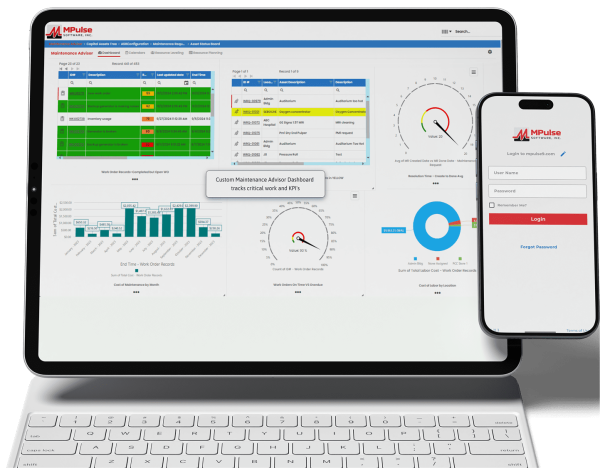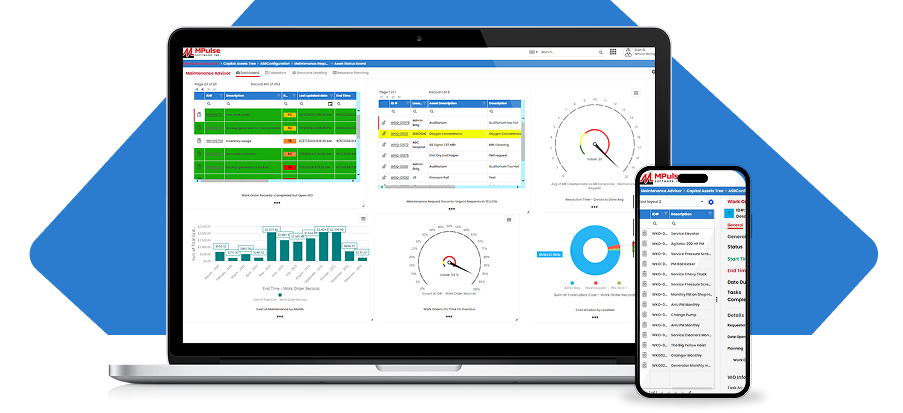In an earlier post, we met Bill and John—two MPulse customers who discovered how their CMMS data could support long-term asset management planning. While Bill needed to make some adjustments to his approach, John made a proactive decision early on to set his CMMS up right—and it paid off. Of course, we’d all like to be in John’s shoes, so let’s talk about how he set up MPulse to support an asset management plan—and how you can too.
If you recall, Keith Mobley, a member of the Society for Maintenance and Reliability Professionals (SMRP), defines an asset management plan as a comprehensive strategic plan designed to help your organization get the maximum value from the assets it owns. Asset management isn’t just for your accounting folks though. It affects your maintenance team because their work impacts the uptime and total lifecycle cost of those assets. And that’s valuable information for your whole organization.
Table of Contents
Start Your Asset Management Plan with Data Tracking
While supporting an asset management plan might sound complicated, in John’s case—and potentially yours—it actually boils down to making a few key decisions about your MPulse data. Here’s what John did:
- He identified his company’s critical assets. John didn’t track every asset his company owns. He picked the ones he knew would take a significant investment to replace, and the ones that most directly impacted production capacity. John created a list of assets that should last more than five years and cost more than $5,000 to buy new. That list included the sheet metal stamping press from my example, but excluded his team’s desktop computer and power tools.
- He chose the information he wanted to collect, track, and report on. Once he had his list of assets, John gathered information on each asset. That included purchase date, purchase price, startup date, and warranty expiration date. Using MPulse’s Asset Lifecycle Tracking feature, he recorded each one’s location, cost center, and department. He also used MPulse’s Custom Tabs & Fields to add details that were important to his organization.
- John let the power of CMMS do the hard work. Once John made those decisions, he simply let the power of his MPulse Software, Inc do the rest. Every job entered into the work management system created a historical record that calculated the labor costs and linked the cost of the parts and inventory used for the job.
Use Your Asset Management Plan to Make an Informed Decision
When the time came for management to decide whether to repair or replace a failed asset, John had the data right in MPulse Software to make an informed decision. With MPulse’s easy-to-use User-Definable Graphic Reporting, John quickly calculated the cost of maintenance by month/year, and he saw the overall cost trends for the asset were steady. With a little help from his accounting department on the estimated replacement cost and productivity improvements, John saw it was better to repair the sheet metal press than buy a new one—at least this time.
After this experience, John decided to take the next step by linking his MPulse CMMS data to his organization’s asset register software with MPulse’s DataLink Integration Adapter. He’s seen the value of his MPulse CMMS data, and he wants to take it even further by supporting a company-wide asset management plan.
Whether or not you’re a current MPulse customer, you can learn from John’s experience. Take a look at your CMMS data with an asset management mindset. You can create a wealth of asset information, helping your organization make more informed decisions, and potentially saving it a lot of money. Give us a call anytime if you’d like to learn more about how to get it done. We’re here to help.






